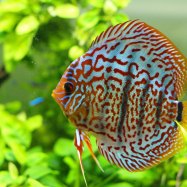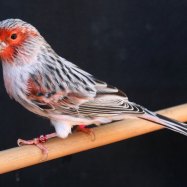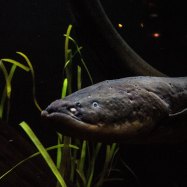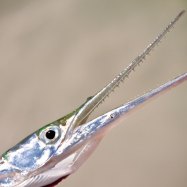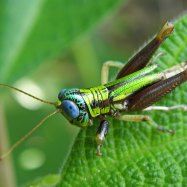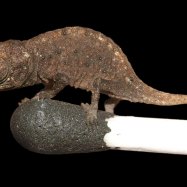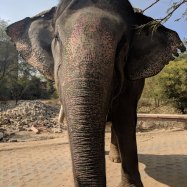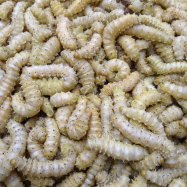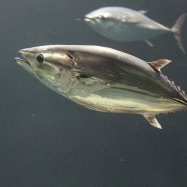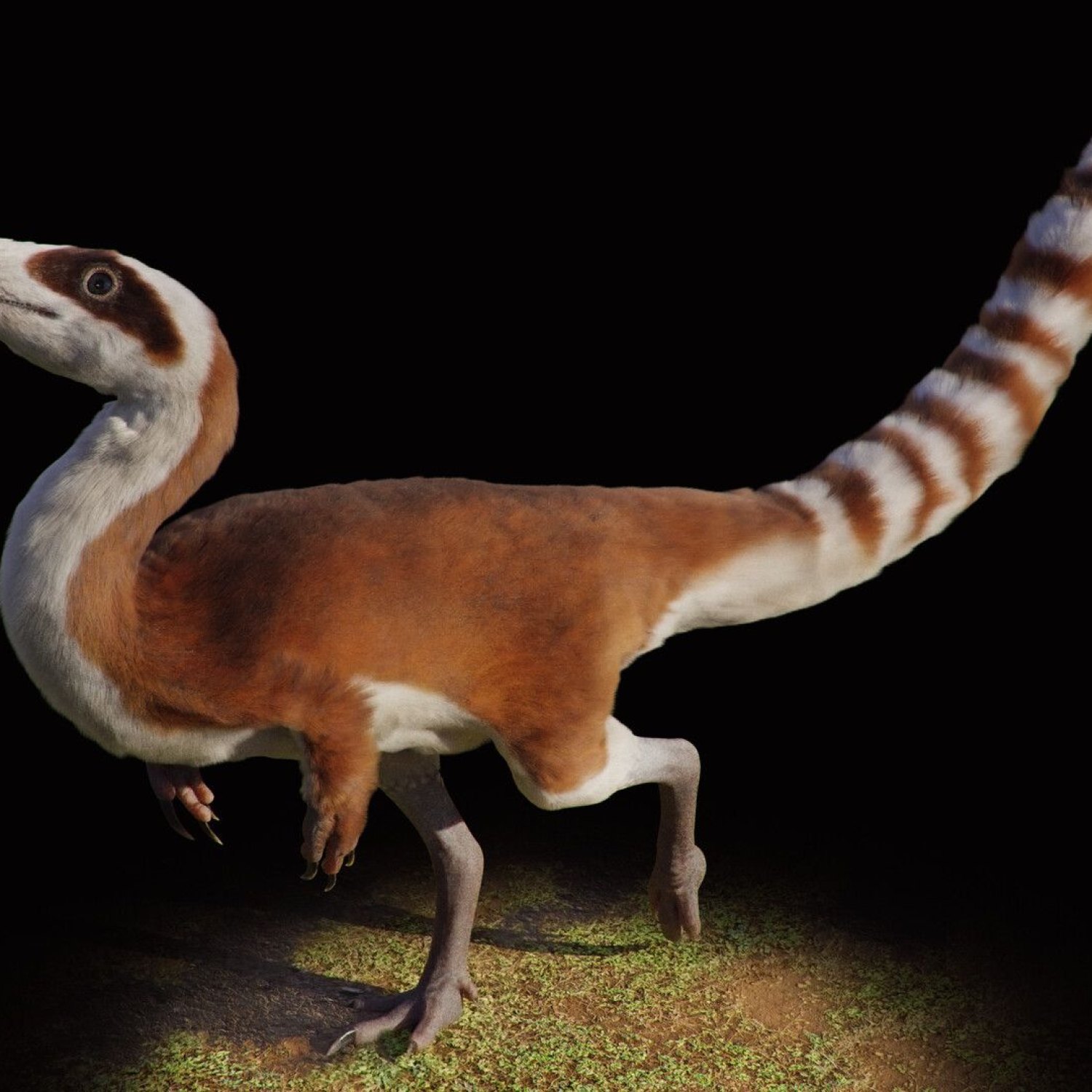
Sinosauropteryx
About 1 meter (3.3 feet)
Sinosauropteryx, a small and slender dinosaur from the Compsognathidae family, roamed the present-day Liaoning Province around 125 million years ago. This carnivorous creature measured about 1 meter in length and is believed to be one of the earliest feathered dinosaurs. Its fossils provide valuable insights into the evolution of birds and their connection to dinosaurs. #Sinosauropteryx #Compsognathidae #LiaoningProvince #feathereddinosaur #evolution #paleontology.
Animal Details Summary:
Common Name: Sinosauropteryx
Kingdom: Animalia
Habitat: Terrestrial
The Fascinating Sinosauropteryx: An Ancient Predator from China
In the vast landscape of prehistoric creatures, one particular dinosaur stands out for its unique appearance and intriguing discoveries. Meet the Sinosauropteryx, a small, predatory dinosaur that roamed the lands of China during the Early Cretaceous period, around 130 million years ago.Named after its country of origin and its feather-like features, the Sinosauropteryx, also known as "Chinese reptilian wing," is a fascinating creature that continues to amaze scientists and researchers with its important role in the study of dinosaur evolution and the origin of birds. In this article, we will take a closer look at the Sinosauropteryx and uncover its intriguing characteristics Sinosauropteryx.
An Ancient Predator with Reddish-Brown Feathers
The Sinosauropteryx belongs to the family Compsognathidae, a group of small, bipedal dinosaurs known for their slender body shapes and sharp teeth. It is believed to be closely related to the well-known Archaeopteryx, which is often considered the world's first bird.One of the most distinctive features of the Sinosauropteryx is its reddish-brown feathers, with light and dark stripes running down its body. The presence of feathers in this dinosaur was first discovered in 1996 by Chinese paleontologist, Ji Qiang, in the Liaoning Province of China. This discovery caused a stir in the scientific community, as it challenged the long-held belief that all dinosaurs were scaly reptiles.
Further studies on the Sinosauropteryx's feathers revealed that they were structurally similar to those of modern birds and were most likely used for insulation, display, or even flight. This groundbreaking discovery provided valuable evidence for the theory that birds evolved from dinosaurs.
A Terrestrial Carnivore with Sharp Teeth
As a member of the carnivorous suborder Theropoda, the Sinosauropteryx was a skilled predator with sharp teeth and claws. These features, combined with its lightweight and agile body, made it an efficient hunter of small animals, such as lizards, mammals, and insects Squirrel Monkey.The Sinosauropteryx had a long, narrow head with a mouth full of sharp, serrated teeth, ideal for tearing into its prey. Its long and slender limbs, with three clawed fingers on each hand and four clawed toes on each foot, were designed for swift and precise movements. With a length of about 1 meter (3.3 feet), the Sinosauropteryx was relatively small compared to other theropods, but its formidable hunting abilities made it a fierce competitor in its ecosystem.
Ancient Remains Uncovered in China
The Sinosauropteryx was first discovered in Liaoning Province, located in northeastern China, which has become a hotspot for paleontological discoveries in recent years. The region is known for its rich fossil beds and has yielded remarkable fossils, most notably feathered dinosaurs like the Sinosauropteryx.The majority of Sinosauropteryx remains were found in the Jiufotang Formation, a geological formation that dates back to the Early Cretaceous period. This formation is known for its fine-grained sediments, which have perfectly preserved the delicate structures of dinosaurs and their feathers.
Other important discoveries of Sinosauropteryx include specimens with preserved internal organs and even stomach contents, providing researchers with valuable insight into its diet and lifestyle.
The Controversy Surrounding Its Feathers
Despite the groundbreaking discovery of feathers on the Sinosauropteryx, there is still much debate and controversy surrounding their appearance and function. Some scientists believe that the feathers were simply a primitive, non-flight related feature, comparable to the body hair of mammals, and did not contribute to any form of flight.However, recent studies have revealed that the Sinosauropteryx's feathers were structurally advanced and could have provided enough lift for some form of flight or gliding. This theory is supported by the fact that the majority of feathered dinosaurs found in the Liaoning Province were also small, light-bodied predators, similar to the Sinosauropteryx.
A Piece of the Puzzle in Dinosaur Evolution
The discovery of the Sinosauropteryx has opened up a whole new avenue of research into the evolution of dinosaurs and their connection to modern birds. Along with other feathered dinosaurs found in China, the Sinosauropteryx has provided key evidence for the theory that birds evolved from theropod dinosaurs.The similarities in bone structure between the Sinosauropteryx and modern birds have also led to the speculation that they might have even shared some flight capabilities. These discoveries continue to reshape our understanding of the evolution of life on Earth and the interconnectedness of past and present creatures.
Preservation and Education
The Sinosauropteryx, along with other dinosaur species, serves as a reminder of the ever-changing planet we live on. It provides us with a glimpse into life millions of years ago and allows us to appreciate the diversity and complexity of the natural world.To ensure the preservation and education of these ancient creatures, several organizations in China, such as the Zhucheng Dinosaur Museum, have dedicated themselves to the study and display of dinosaur fossils. These museums not only showcase the wonders of the past but also educate the public on the importance of conservation and the need to protect the planet for future generations.
Conclusion
The Sinosauropteryx is a truly remarkable creature, not only for its striking appearance but also for the valuable insights it has provided to the scientific community. From its feathers to its hunting abilities, this ancient predator continues to fascinate and challenge our understanding of dinosaur evolution.With ongoing research and discoveries, we can only hope to uncover more about this mysterious creature and its place in the history of life on Earth. Until then, the Sinosauropteryx remains a testament to the ever-evolving nature of our planet and the continuous quest for knowledge and understanding.

Sinosauropteryx
Animal Details Sinosauropteryx - Scientific Name: Sinosauropteryx
- Category: Animals S
- Scientific Name: Sinosauropteryx
- Common Name: Sinosauropteryx
- Kingdom: Animalia
- Phylum: Chordata
- Class: Reptilia
- Order: Saurischia
- Family: Compsognathidae
- Habitat: Terrestrial
- Feeding Method: Carnivorous
- Geographical Distribution: China
- Country of Origin: China
- Location: Liaoning Province
- Animal Coloration: Reddish-brown with light and dark stripes
- Body Shape: Small, slender
- Length: About 1 meter (3.3 feet)
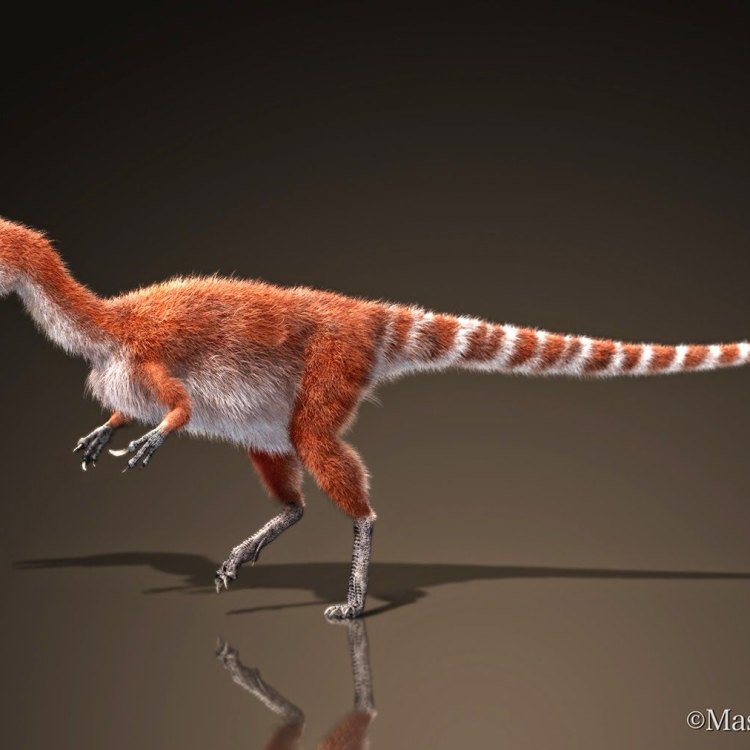
Sinosauropteryx
- Adult Size: About 1 meter (3.3 feet)
- Average Lifespan: Unknown
- Reproduction: Egg-laying
- Reproductive Behavior: Unknown
- Sound or Call: Unknown
- Migration Pattern: Non-migratory
- Social Groups: Unknown
- Behavior: Unknown
- Threats: Unknown
- Conservation Status: Extinct
- Impact on Ecosystem: Unknown
- Human Use: None
- Distinctive Features: Long tail with feathers, small size
- Interesting Facts: One of the first dinosaurs known to have feathers
- Predator: Unknown
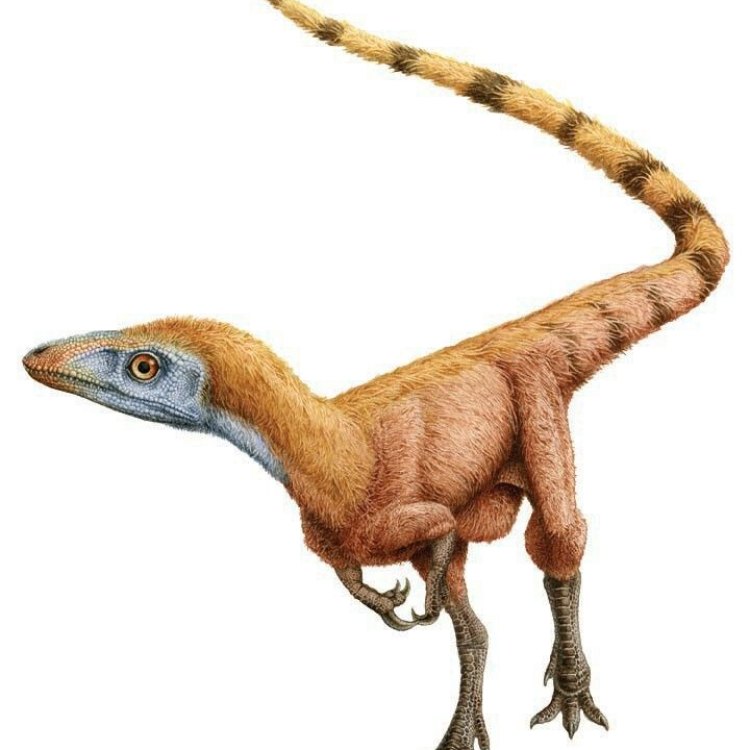
Sinosauropteryx
The Fascinating Sinosauropteryx: An Ancient Dinosaur with Modern Surprises
When we think of dinosaurs, the image that usually comes to mind is a large, scaly, and toothy creature. However, the discovery of the Sinosauropteryx, a small feathered dinosaur, shattered this stereotype and revolutionized our understanding of these ancient creatures.Discovered in 1996 in northeastern China, the Sinosauropteryx is believed to have lived during the early Cretaceous period, about 130 million years ago. It was one of the first dinosaurs that scientists identified to have had feathers, a groundbreaking revelation that changed the way we perceive dinosaurs PeaceOfAnimals.Com.
Appearance and Size
The Sinosauropteryx was a relatively small dinosaur, measuring about 1 meter (3.3 feet) in length and weighing around 1 kilogram. It was similar in size to a modern-day chicken, making it one of the smallest known carnivorous dinosaurs.What makes the Sinosauropteryx stand out is its long, feathered tail, which was approximately half the length of its entire body. These feathers were believed to be used for balance and courtship display, rather than for flying.
The Feathers
While the Sinosauropteryx was not the first dinosaur believed to have had feathers, it was the first to be confirmed. Fossils of the Sinosauropteryx found in China revealed that its feathers were composed of a primitive type of feather called "protofeathers."Protofeathers were very simple, hair-like structures that lacked the complex branching structure of modern feathers. However, they still allowed the Sinosauropteryx to have a rudimentary form of insulation, just like modern birds Standard Schnauzer.
The presence of feathers on a carnivorous dinosaur sparked a debate about the role of feathers in dinosaur evolution. Some scientists believe that feathers were initially used for insulation and display, with flight evolving later. Others believe that the feathers were initially used for flight and evolved into insulation later on.
Reproduction and Behavior
Unfortunately, there is very little information available about the reproduction and behavior of the Sinosauropteryx. We do know that it was an egg-laying species, but how it reproduced and raised its young remains a mystery.The discovery of fossilized nests and eggs of closely related species, such as the Sinornithosaurus, suggest that the Sinosauropteryx may have had similar reproductive behaviors. It is believed that these dinosaurs laid clutches of eggs in nests and protected them until they hatched.
As for its behavior, scientists speculate that the Sinosauropteryx may have used its feathers for display during courtship rituals. It is also possible that the feathers were used for camouflage and thermal regulation.
The Surrounding Environment
The Sinosauropteryx lived in what is now northeastern China, during a time when this region was covered in lush forests. Its habitat would have been humid and warm, with a diverse array of plant and animal species.During this time, China was part of a larger landmass called Laurasia, which included North America, Europe, and Asia. This allowed for the movement of animals between these continents, contributing to the diversity of species in the region.
The Predators and Prey
The Sinosauropteryx was a mid-sized predator, and it likely fed on small animals such as insects, lizards, and small mammals. Its sharp teeth and agile body made it a skilled hunter, able to catch and consume its prey efficiently.As for predators, it is uncertain who may have posed a threat to the Sinosauropteryx. Being a small and agile carnivore, it may have been able to avoid larger predators such as the Tyrannosaurus rex and the Spinosaurus.
Threats and Extinction
While the exact cause of the Sinosauropteryx's extinction is unknown, it is believed to have gone extinct along with many other dinosaurs during the Cretaceous-Paleogene mass extinction event. This event is thought to have been caused by an asteroid impact, leading to drastic climate change and the collapse of ecosystems.The Sinosauropteryx, along with many other species, was unable to adapt to these rapid changes and eventually became extinct. However, its fossils have given us a glimpse into the incredible world of dinosaurs and their unique features.
Human Use and Conservation Status
Being an extinct species, the Sinosauropteryx has no direct impact on human use or conservation. However, its discovery and subsequent studies have significantly enhanced our understanding of dinosaur evolution and behavior.The Sinosauropteryx is classified as an extinct species and is not currently listed on the International Union for Conservation of Nature (IUCN) Red List. However, its impact on the ecosystem it inhabited during its time on Earth remains a topic of interest for scientists.
Fascinating Facts
One of the most interesting facts about the Sinosauropteryx is that it was one of the first dinosaurs to be confirmed to have feathers. This discovery was crucial in understanding the evolution of birds and feathers.Another interesting fact is that some fossils of the Sinosauropteryx have traces of melanosomes, which are pigmented structures that give feathers their coloration. This indicates that the Sinosauropteryx may have had a reddish-brown coloration, making it one of the most colorful dinosaurs known to date.
Conclusion
The Sinosauropteryx is a unique dinosaur that has surprised scientists and changed our perception of these ancient creatures. Its small size, feathers, and intriguing features make it a fascinating species to study and learn from.While there is still much that we do not know about the Sinosauropteryx, its discovery has opened up a world of possibilities and unanswered questions. As scientists continue to uncover more fossils and study the world of dinosaurs, we can only imagine what other surprises may be waiting to be found.
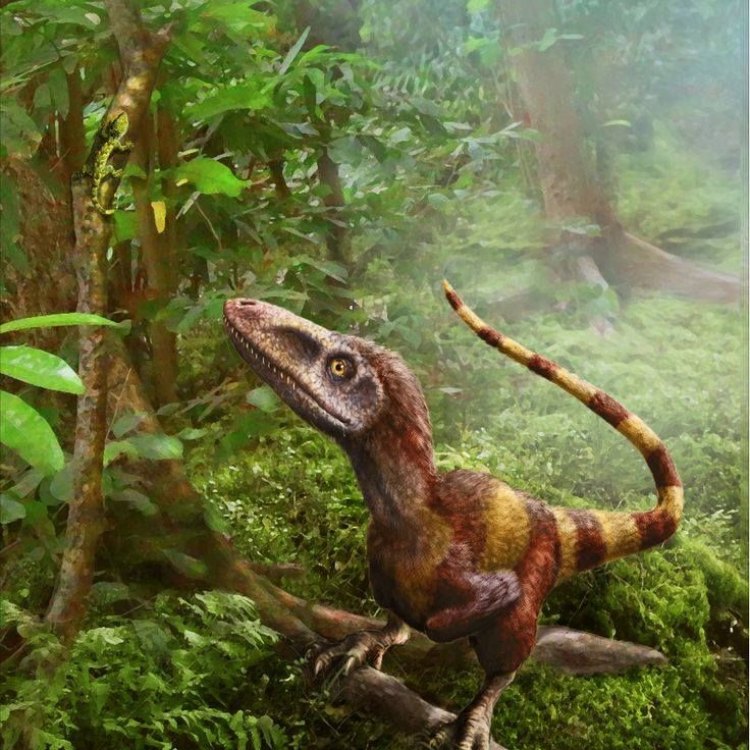
The Fascinating Sinosauropteryx: An Ancient Predator from China
Disclaimer: The content provided is for informational purposes only. We cannot guarantee the accuracy of the information on this page 100%. All information provided here may change without prior notice.


